Damp caused by cavity wall insulation.
The following post is a short review of the current situation regarding dampness caused by cavity wall insulation. However, what we need to address are the facts, which seem to be in short supply regarding this subject. Have you seen any damp caused by cavity wall insulation? I asked myself this when I read some of the recent media posts, particularly Jeff Howell’s piece on damp caused by cavity wall insulation.
Below I explain why there is a need for more investigation on the real causes of damp in buildings and what role retro-fit cavity wall insulation has.
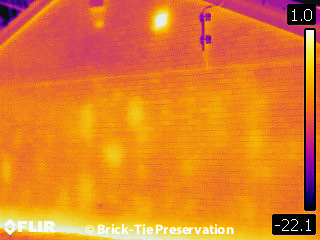
Almost all cavity wall insulation installations show some variation in density – is this always going to cause a problem?
The facts are that cavity wall insulation has been installed in millions of homes and the number of complaints is quite small. This would normally indicate that problems are rare. However, as described on many web sites and in Jeff’s post, some damp problems may be misdiagnosed, so that the cause is described as due to rising damp, penetrating damp or condensation, even if cavity wall insulation is involved.
Of course we must remember what cavities are for. They are not related to insulation and are there to reduce the chance of rainwater penetration across a cavity to the inner leaf of masonry, where it can cause damp. Filling the cavity will always present the ‘possibility’ of bridging. However, modern hydrophobic materials do not attract water so in theory, penetrating damp shouldn’t be a problem.
Some say that the cavity supplies vital ventilation and that blocking this free flow of air may also cause damp. However, the vapour permeability of most modern insulation materials is very high. Certainly much much higher than say, the internal plaster covering the walls or even the decoration, so once more, this shouldn’t cause issues.
So, what is going on and why are people finding damp, to such a severe degree that the insulation, when exposed, is wet through? Why is mould becoming an issue in some cavity wall insulated houses and is the CWI to blame?
Let’s imagine we have a well built pre-war house with a cavity wall. It is in good condition and a year or so after cavity wall insulation is installed the owner complains of a damp smell, a cold house and high energy-bills. He is a Telegraph reader and sees a post by a ‘claims specialist’ and asks for the insulation to be checked.
The cavity wall insulation removal specialist
Along comes the recommended cavity wall insulation removal specialist and, after a few checks he condemns the insulation as incorrectly installed and – it is responsible for all of the owners damp problems. These defects could include, some debris in the cavity, which was there before the insulation was installed. It could be that an air brick or two were blocked by insulation, there are voids in it or it could be that the house is near a westerly coast, or has a poorly pointed wall or some missing pointing.
It’s true that where there’s a claim there’s a gain and this applies where cavity wall insulation is concerned
In many cases the insulation is removed, the debris removed and the walls are pointed and in some cases treated with a water repellent too.
This is brilliant for the claims company and his installers. It’s a disaster for the insulation company though (well, their insurers really).
Why should we care? Well the thing is that I see houses with and without cavity wall insulation, which are mouldy and damp. I’d be fascinated to see data on the environmental changes, which follow removal of insulation for comparison with data obtained prior to the event. Whilst I accept that there are many cases of poor specification and poor installation of cavity wall insulation, I just don’t see the evidence for massive effects on dwellings, apart from exceptional cases. Certainly nowhere near the touted 3 million homes affected, which some journalists are promoting as a probability.
Let’s not forget that the claims specialists have a direct conflict of interest here. They make money from the entire claims procedure; the inspection, complaint handling and subsequent removal of the CWI. In some cases they also offer the repairs, which ought to have been done beforehand, such as the pointing, cavity cleaning and such. I’ve no objection to this and have even explored the possibility of my own company carrying out CWI extraction, where I can see a need (very rare so far, other than isolated areas – see below). However, the conflict of interest is important, because of course it naturally colours the context of the discussions. There are now web sites galore telling homeowners that their insulation is a threat to them and is probably causing the damp… and of course that it can all be solved with a simple phone call to ‘our partners’ – this is called marketing and we all do it. It should be recognised as such – even if the web sites look like consumer information sites, which they are not, rather than adverts for services, which they are.
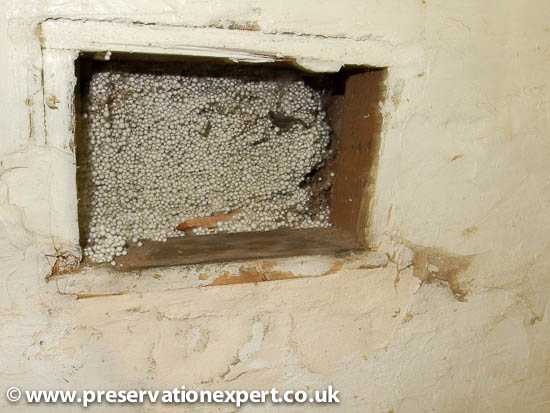
This insulation is causing damp and the remedy is to remove the insulation which is blocking the vent – not all of it.
We need to be adult about this avalanche of negative information about CWI. I haven’t seen much damp caused by cavity wall insulation. As a specialist damp surveyor that puzzles me. The media would say that this is because, as a damp specialist I am missing the symptoms. However, I can’t see that, given how careful, well trained, experienced and well equipped I, and many of my fellow Property Care Association members are. There are problems with CWI and I am not denying that – it’s the degree I am worried about.
Investigating the potential for damp caused by cavity wall insulation.
This issue needs investigating and ideally we need to follow through some of the CWI removal cases, to make sure that the cart isn’t leading the horse, so to speak.
A good way forward would be to find a few houses where the insulation is suspected as causal in the owner’s damp problems. A detailed survey should be done, separately from any claim malarkey. Data must form part of this, including at least a few weeks of data, recording the internal and external environment: vapour pressure differentials; surface temperatures and relative humidity. A detailed moisture audit, to check for other moisture sources – the means of ventilation, heating regime and occupancy levels. All these are crucial because without this information, all we have is a cavity wall insulated house ,where the installer broke the rules – rather than a house where the insulation caused the problem.
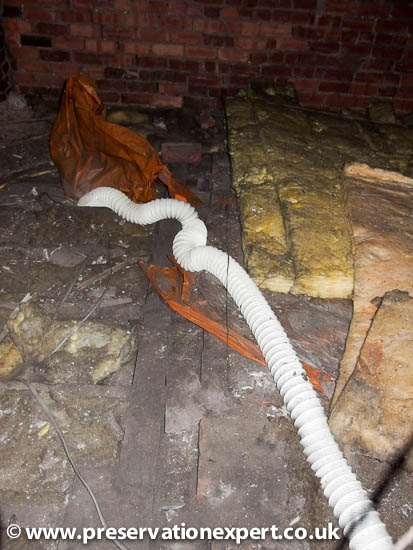
I know the cavity wall insulation is not installed correctly – but is this ventilation duct involved in the damp problem at all?
In a perfect situation the data loggers would be left in-situ for a few weeks well after the CWI is removed and ideally other environmental improvements should be left alone – no improvements to ventilation or heating and such. Then a clear idea of the role of the insulation itself can be arrived at. An alternative would be to leave the CWI in-situ and address only the defects found. Improve the ventilation if that is poor, remove blockages from the cavity or unblock the vents. Merely replace the local areas of insulation where voids are found. Perhaps apply a water repellent cream such as StormDry to the external walls if required. If that solves the problem, without removing the CWI, then that too would give valuable insights into what is really going on. It could also save CO2 as we are left with a dry insulated house, rather than a dry but cold house.
The rules about insulation installation are clear and they’ve been broken many times. The insulation industry must be feeling pretty worried about developments. However, are these incorrectly installed jobs really causing as much damage as we’ve heard? The truth is that nobody really knows. We know about the really bad cases of bad practice in installation, but we now have a new industry emerging, paid for by the claims system. Is it right that this industry should form opinion, without independent research on the subject? In addition, what role does subsequent work, done after cavity wall insulation has been installed, play in all this? I have written quite a lot about the possibility of wall tie installations causing damp problems in houses with CWI installed. We’ve all seen how much debris can be pushed into a cavity by a tradesman installing a new soil and vent pipe or a boiler flue too.
I intend to have a chat with some of my peer group in the damp diagnosis industry and we may be able to get some data to address the lack of information. If you have a house which is damp and the insulation is being blamed and you live in Yorkshire, I’d love to come and have a look…. please get in touch.
Dry Rot.
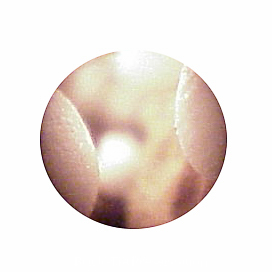
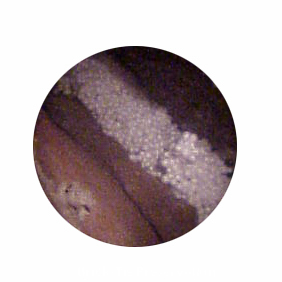
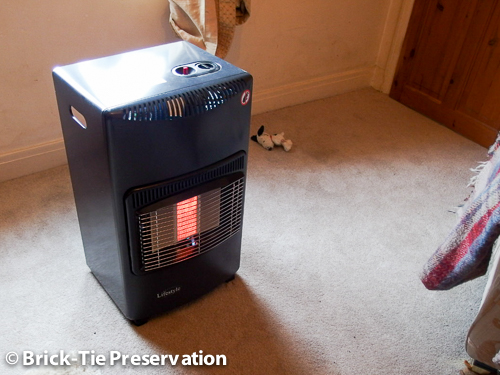
No! We have been personally affected by cavity wall insulation and damp. We have lived through it. Problems are not rare. We deal with it every day for free!
Hi,
Thank you for getting in touch. I’m sorry I don’t have a name for you ‘CIVALLI’.
I do hope that you solved your damp problem and it’s refreshing that you are helping others who may have similar issues with CWI and damp.
What worries me is the current claims-led tsunami of bad publicity about CWI and the apparent ‘gold-rush’ this has engendered. My specialisation is damp diagnosis. I remain to be convinced that all of the CWI currently being hoovered-out of cavities and thrown into landfill, is responsible for the damp and mould problems these houses suffer from. It is in some cases of course; CWI blocking air bricks is a direct cause of excess humidity, which leads directly to mould and poor indoor air quality. I’ve seen it result in severe decay in sub-floor timbers and mould in loft spaces too…. quite dreadful and the direct result of poor site supervision.
However, from the evidence I’ve seen and the information given to me by others who know about these things, the current ‘bandwagon’ of CWI claims has been partially hijacked by those who are more interested in making a quick buck from the claims procedure, than actually helping consumers. Why? Well, consumers who have a damp or mould problem will of course search the internet these days for answers. What they find is a plethora of information of varying quality and reliability. Information may be good and unbiased. It may be self-promoting marketing and scaremongering too. This is modern life.
What’s needed is a proper survey of the effected house by an independent surveyor who really understands the issues of moisture in buildings. If the damp issue points at for example, blocked air bricks, bridged cavities and such then fine – unblock those air bricks – sort out the bridging issue. That needed addressing – sucking out the CWI is not the answer to a house with no extraction in the bathroom, poor heating or other causes of mould. If the south westerly damp CWI containing gable is on a cliff edge near the sea then remove the insulation, it should never have been installed.
The thing is though, that in many cases the inspection is carried out by a company, salesman or surveyor connected to the new ‘CWI claims machine’. This means that the attention is not on finding the cause of the mould or damp. It is merely an exercise in finding a defect in the CWI installation or specification. If one is found then a huge claim is started. This may or may not result in the damp and mould problem (the thing the consumer is rightly concerned about), being rectified. So if the damp and mould remains after the CWI has been removed, what then? Have the claims surveyors got sufficient professional indemnity insurance to pay for the re-installation of the insulation and repayment of the money paid to them for the removal work, which it turned out wasn’t needed? Where are the consumers interests in this I wonder? If CIGA is bankrupted by these semi-fraudulent/semi-incompetent claims, what of those who did have a genuine problem, rather than merely an imperfect CWI installation, which just happened to be installed in a damp and mouldy house? They can’t get justice now because the money has been paid to de-insulation contractors (some are the same guys who installed the CWI in the first place).
What is clear is that the cause of dampness should come first – not whether the CWI is a perfect installation. The former is logical, the later is a joke. I know, I’ve been in the construction sector all my life – you’ll find it very hard to unearth a perfect installation of anything; CWI, Damp Course; Roof; Floor or heating system. That is life.
Anyway – I hope all is well with you now and you have fully recovered from your bad experience with CWI.
Bryan
An interesting article, I hope you follow this up with the data you obtain.
I was searching for some more information on CWI and the possibility of it casing damp (Which I understand to be rare). After moving into a house which was logically sold to me just before winter, I have started to experience penetrating damp on one of the walls which is Westerly facing and completely open to the elements.
I first got an independent builder to inspect the issue and he suggested it was caused by the CWI. I have since contacted the installers who will be coming over in the next week to check the integrity of the CWI and see if this is actually the issue.
Thanks for the information above though, interesting and useful.
Aaron
(Aberbargoed – Rhymney Valley).
Hi Aaron,
I hope you get to the bottom of it and do please let me know how it goes. CWI should not be installed too near westerly coasts due to exposure to driving rain. It is also important that the external leaf is in good condition before the CWI is installed. The installers have a duty to check the condition and should refuse to install until the repairs are done. If for any reason the brickwork is just a little porous and the pointing is good, you can often get great benefit from an application of Safeguard Europe’s StormDry water repellent cream. We’ve had great success with this in similar situations. It stops the rainwater getting through to the cavity so you get the best of both worlds – improved insulation and no need to strip out the CWI. Of course every house is different and a survey would be needed to ensure this is appropriate.
Have a look at this post for details on how to diagnose penetrating damp. Of course it may be something else!!!!
all the best
bryan
Hi Bryan,
Very interesting article, thanks.
We’ve investigated, and previously dismissed CWI due to potential issues with damp. Partly due to the publicity you mention, and partly on the advice of the British Gas surveyor who visited. I don’t know whether he was being cautious with good reason, or whether BG are more cautious than necessary due to potential claims or cost – this was an assessment for BG insulating on the energy grant).
The house is in a dip and the clay soil has a high water table and sub-soil springs. We are working through all the sources of damp, internal and external. Most are done, land/french drains above the house are the biggest item and “pending” but a warmer house and lower bills would be great if we can install CWI safely before this is completed.
Are there any resources you can recommend for finding damp surveyors and/or CWI installers in Surrey/Sussex/Hampshire who are aware of the issues you mention and how to work around them?
Thanks,
Ed
Hi Ed,
I would get a CWI cpmpany to inspect prior to installation. They should always suvey teh house for pre-exiting defecsts or for any issues in the cavity which would result in problems if CWI was installed. If you make sure they do this and ask exacly what they propose to do and what they check you should know.
I am not anti-CWI, but you must not be on a westerly coastal site and make sure the cavity is clear of debris, pointing good etc. Also make sure your extract ventilation in the Kitchen, bathrooms etc is working well and is above all USED!
Bryan